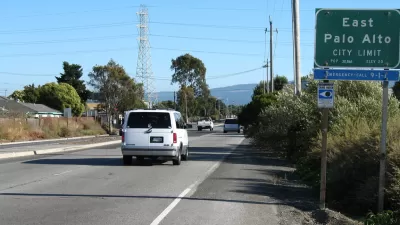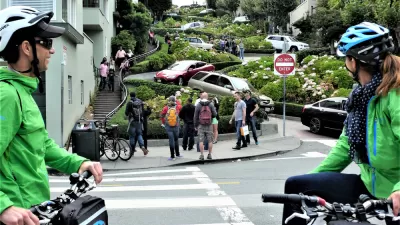With Los Angeles now planning to install HOT lanes, a pair of recent articles in the L.A. Times question whether congestion pricing is a way to help the rich at the expense of the poor, or a practical solution to traffic congestion and its ills.
Tim Rutten questions the fairness of charging for access to carpool lanes, and accuses local officials of embracing congestion pricing simply due to the availability of federal funding.
"When the Metropolitan Transportation Authority voted Thursday to convert carpool lanes to toll routes on as many as three Los Angeles freeways, the question of just what that decision begrudges to whom was lost in a flurry of self-congratulation.
Los Angeles Mayor Antonio Villaraigosa called the move "a great opportunity to think outside the box," and added: "Part of the reason Los Angeles has not been able to grapple with gridlock is because we've been unable to make the tough decisions."
Right. It takes unconventional and courageous thinking to come up with a plan that clears a highway lane for the well-off, while the middle class and working poor are left to inhale each other's $5-a-gallon exhaust fumes."
However, transit consultant Michael Eshleman responds that the plan simply ensures that drivers pay the full costs, and will encourage residents to revisit decisions about where they live and work.
"It helps to compare freeways to restaurants to understand their shortcomings. Like freeways, most restaurants experience "peak hours," when demand outstrips supply. These periods are typically brief (a few hours at a time), and often the rest of the day there is a glut of capacity.
Congestion pricing will encourage those unwilling or unable to pay to use toll roads to either change their address or change their commuting behavior. This policy will affect the pocketbooks of the poor more acutely than the wealthy, should they decide to drive in the toll lanes. But driving in general already brings with it an exorbitant cost of entry for low-income people: One must purchase an expensive vehicle, insure it, register it, maintain it and purchase fuel for it. And it should be noted that this policy will primarily affect single-occupant low-emissions vehicle owners and carpoolers (though carpoolers will pay a reduced rate). This policy will improve mobility for buses and those willing to pay the toll. Those who do not want to pay are still perfectly free to use general-purpose lanes and do what they currently do: sit in traffic."
FULL STORY: Taking the 'free' out of freeway

Manufactured Crisis: Losing the Nation’s Largest Source of Unsubsidized Affordable Housing
Manufactured housing communities have long been an affordable housing option for millions of people living in the U.S., but that affordability is disappearing rapidly. How did we get here?

Americans May Be Stuck — But Why?
Americans are moving a lot less than they once did, and that is a problem. While Yoni Applebaum, in his highly-publicized article Stuck, gets the reasons badly wrong, it's still important to ask: why are we moving so much less than before?

Research Shows More Roads = More Driving
A national study shows, once again, that increasing road supply induces additional vehicle travel, particularly over the long run.

Judge Halts Enforcement of Anti-Homeless Laws in Grants Pass
The Oregon city will be barred from enforcing two ordinances that prosecute unhoused residents until it increases capacity and accessibility at designated camping sites.

Advancing Sustainability in Los Angeles County Schools
The Los Angeles County Office of Education’s Green Schools Symposium brings together educators, students, and experts to advance sustainability in schools through innovative design, climate resilience strategies, and collaborative learning.

Using Old Oil and Gas Wells for Green Energy Storage
Penn State researchers have found that repurposing abandoned oil and gas wells for geothermal-assisted compressed-air energy storage can boost efficiency, reduce environmental risks, and support clean energy and job transitions.
Urban Design for Planners 1: Software Tools
This six-course series explores essential urban design concepts using open source software and equips planners with the tools they need to participate fully in the urban design process.
Planning for Universal Design
Learn the tools for implementing Universal Design in planning regulations.
City of Moreno Valley
Institute for Housing and Urban Development Studies (IHS)
City of Grandview
Harvard GSD Executive Education
NYU Wagner Graduate School of Public Service
City of Cambridge, Maryland
Newport County Development Council: Connect Greater Newport





























